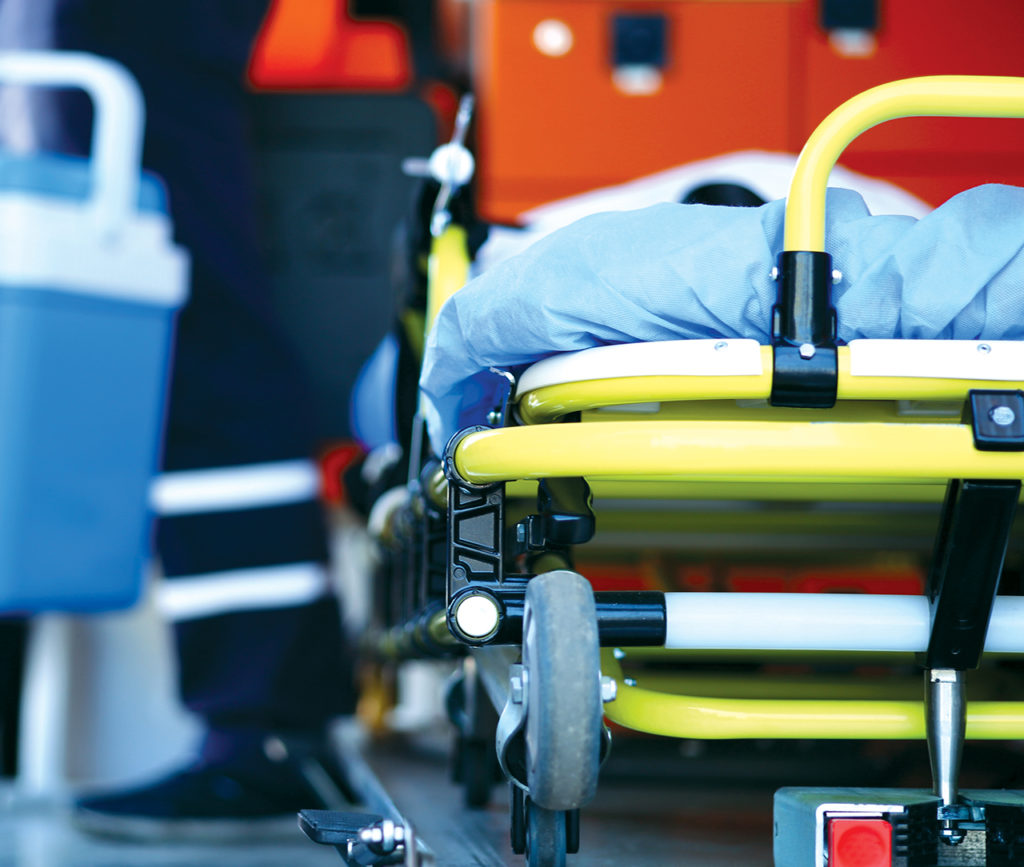About Emergency Preparedness

It’s time to change the way California thinks about disaster response. The COVID-19 pandemic showed that hospitals can quickly mobilize to provide flexible approaches to patient care during a disaster. The state must draw upon these lessons to prepare differently so the next crisis will be less severe. Given California’s size and complexity, the health care disaster response system of the future must be nimble enough to respond to any catastrophe. View more information on hospital disaster preparedness.
Chemical Hazards Emergency Medical Management
The Chemical Hazards Emergency Medical Management website offers a comprehensive, user-friendly, web-based resource that is also downloadable in advance, so that it would be available during an event if the internet is not accessible.
Decontamination Resources for Hospitals
These resources were compiled to assist hospitals strengthen their overall preparedness, safety protocols, and ability to respond to incidents involving hazardous material incidents. They include essential guidelines for setting up effective decontamination procedures, proper handling of victims exposed to hazardous substances, and offer structured frameworks for monitoring the health of medical personnel involved in decontamination efforts.
Best Practices for First Receivers of Victims from Mass Casualty Incidents Involving the Release of Hazardous Substances
This resource provides a general overview of applicable OSHA standards and can be useful to California hospitals in maintaining a safe and healthy work environment for their employees. Interpretations and enforcement policies evolve, so hospitals are advised to consult the latest OSHA administrative interpretations and rulings from the Occupational Safety and Health Review Commission and the courts for further guidance on compliance requirements.
Hospital Decontamination Self-Assessment Tool
Developed by the Harvard School of Public Health, this self-assessment tool provides hospitals with a means of evaluating decontamination plans and capabilities against current regulatory standards, recommendations from subject matter experts, and national and international health care decontamination best practices.
Recommendations on Selection and Use of PPE and Decontamination Products for First Responders
This InterAgency Board (IAB) publication establishes guidance for personal protective equipment selection and use, decontamination, detection, and medical countermeasures for first responders who may be exposed to opioids in the course of their occupational activities.
Federal Bureau of Investigation Internet Crime Complaint Center
The Federal Bureau of Investigation Internet Crime Complaint Center, also known as IC3, accepts online Internet crime complaints. Complaints may come from the victim or interested third party. When filing a complaint be accurate and thorough.
Hospitals are Targets for Cyber Scams Following Disasters
Hospitals are frequently targets for cyber and social engineering scams following disasters. Hospitals can mitigate their risk by recognizing and preventing cyber threats, phishing emails, ransomware attacks, and fraudulent fundraising campaigns.
Cybersecurity in Hospital Disaster Planning
Cybersecurity is integral to hospital emergency response efforts, as it protect sensitive information, maintains operational continuity, prevents disruptions, combats disinformation, secures critical infrastructure, and facilitates collaboration among stakeholders.
CHA Checklist: Hospital Cybersecurity Planning Quick Reference Tool
A helpful tool providing cybersecurity information and resources for health care organizations, tools to assist with gap analysis and state support systems, a mitigation checklist, and suggestions for where to report cyberattacks, as well as share information.
Protecting Sensitive and Personal Information from Ransomware-Caused Data Breaches
Ransomware is a serious and increasing threat to all government and private sector organizations, including critical infrastructure organizations.